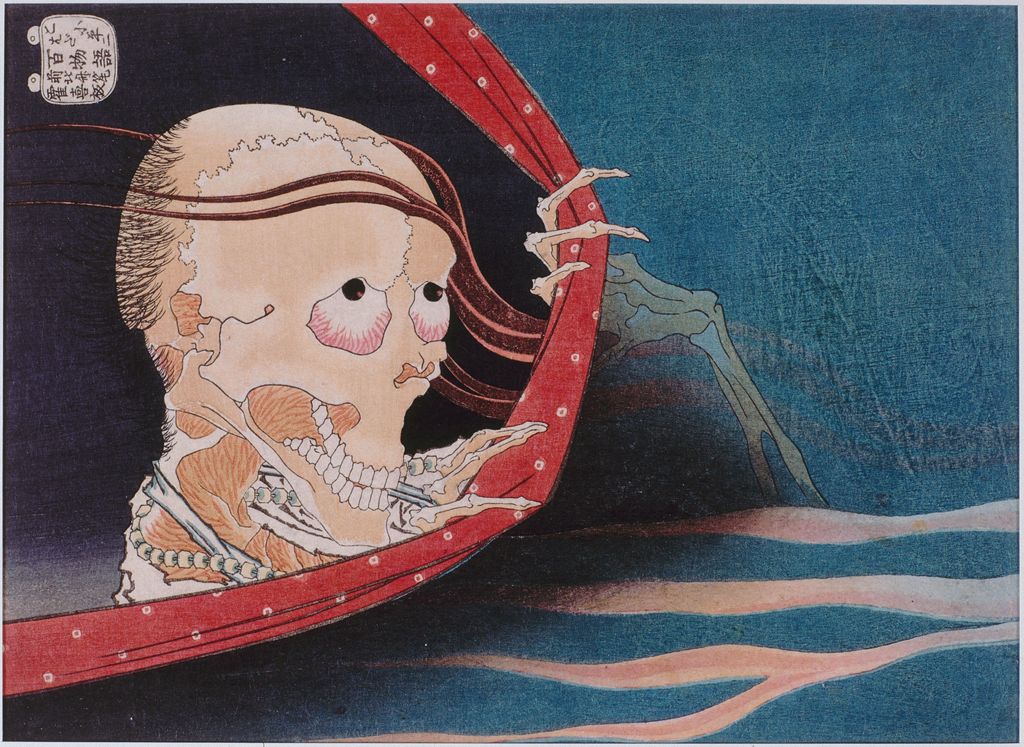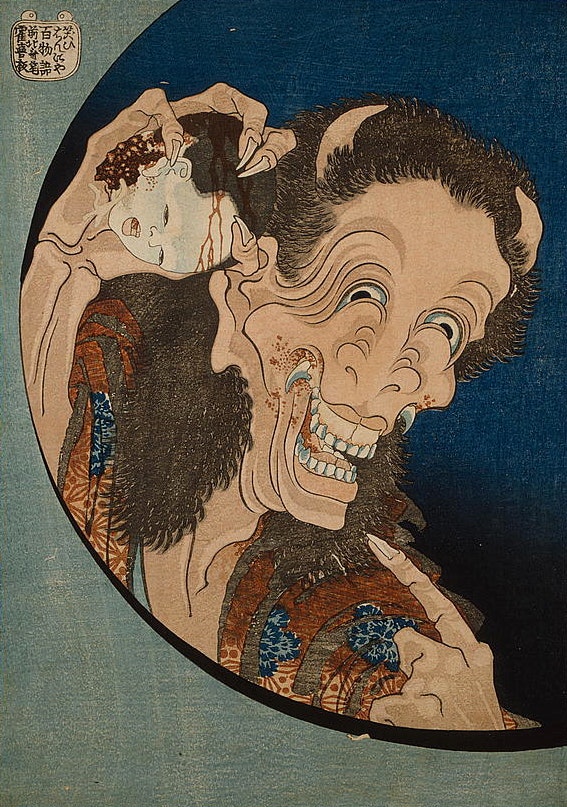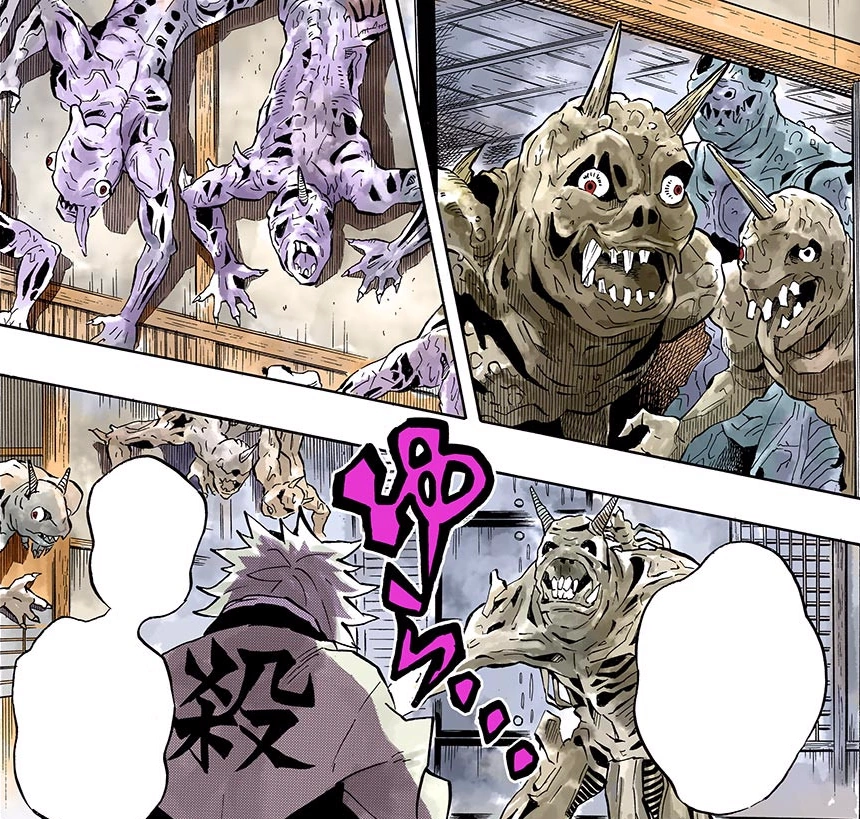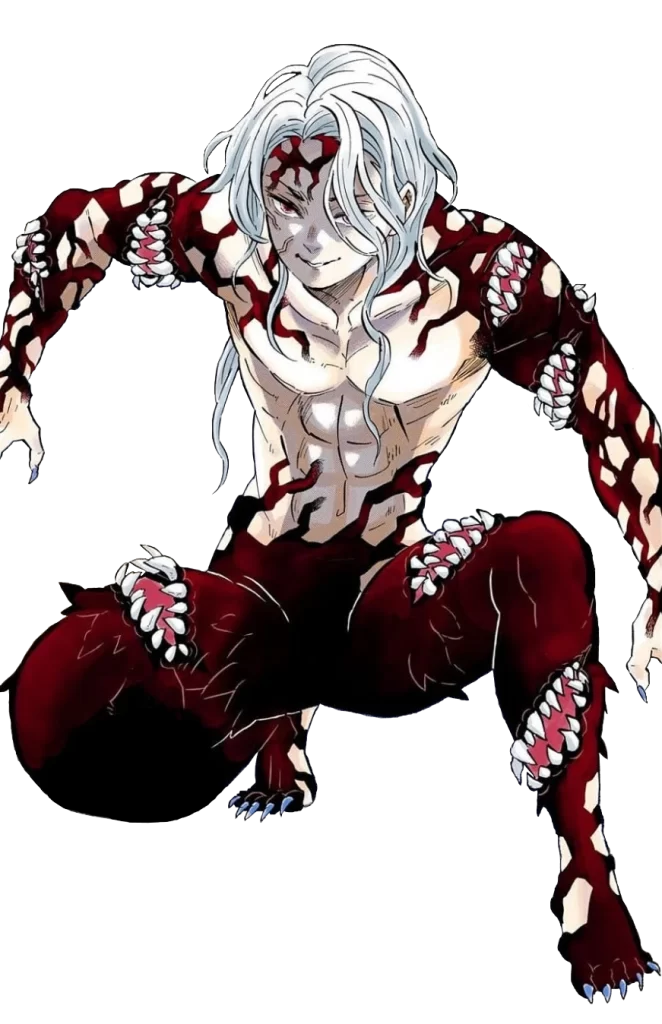Introduction/Overview:
From Hollows in Bleach, curses in Jujutsu Kaisen, to human-eating demons in Demon Slayer, Japanese 2D art in the modern day is rife with depictions of the supernatural. These prolific supernatural themes in anime and manga today originate from Japanese folklore, myths, and urban legends, which are heavily influenced by the two primary religions in Japan: Shintoism and Buddhism. The pantheon of spirits in Japanese folklore and mythology consists of many beings which include kami (deities or revered spirits), yōkai (monster-spirits such as oni, similar to Western demons, ogres, and trolls), yūrei (ghosts), Japanese dragons, and animals with supernatural powers such as the kitsune (fox). These supernatural beings in traditional Japanese 2D art can be traced back to 1200, and probably earlier, in hand scroll paintings, ukiyo-e (woodblock prints), and other 2D media that have provided a rich foundation for modern Japanese 2D to build off of in a more globalized context that brings more nuance to what it means to be an oni or yokai. That being said, through visual research I will explore my central research question: How is the supernatural depicted in traditional Japanese 2D art, and how has this informed the way in which the supernatural is depicted in anime and manga currently?
Many, if not all, cultures have folklore and superstitions about supernatural forces and beings. However, my research connects to the central question, “What is Japan-ness?”, as the folklore and religious beliefs around the supernatural that I will examine are distinctly Japanese as they are known as yōkai, oni, etc., and draw on Shintoism and Buddhism. Additionally, these “ghost stories” are depicted in distinctly Japanese art forms and styles, such as anime, manga, and woodblock prints (ukiyo-e). To continue, when one thinks of Japan, anime and manga often pop into one’s mind. This genre of 2D art and animation has become a hallmark of Japan as they have mainly spearheaded the art style, therefore, the association with anime and manga is uniquely Japanese.
Lastly, as someone who mainly does 2D art, Japanese illustrations and animations are very inspiring to me. The distinct art styles, engrossing plots, and interesting character designs in anime and manga have fascinated me ever since I discovered it. To continue, I decided to look specifically at Japanese folklore around demons and spirits as it is very interesting, especially how this translates into art. Spirits, oni, yōkai, etc., are antagonists in countless anime/manga, so I wanted to explore how these stories/legends/folklore have traversed both traditional and current 2D art forms.
Visual Sources and Scope of Research:
I chose these materials and visual sources because they are all Japanese 2D art, and I believe that they depict and/or discuss prime examples of oni or yōkai according to Japanese folklore. Also, I have watched the aforementioned anime so I am already familiar with the supernatural elements present in it. Demon Slayer (Kimetsu no Yaiba) has a traditional Japanese backdrop and includes many traditional elements of Japanese culture as it takes place during the Taishō Period (1912-1926). Following the Meiji Period, the Taishō Period was characterized by the rise in modern technology (such as trains), and the clash between traditionalism and modernism as Japan was becoming more involved in the international scene. To continue, I wanted to familiarize myself with illustrations of the supernatural in traditional Japanese paintings and woodblock prints, which is why I chose to take a closer look at Hokusai’s depictions of yōkai in his Hyaku Monogatari (One Hundred Tales of Ghosts) (ca. 1830). This series was never completed and only five works can be seen today, however, they provide beautifully rendered images of ghosts, oni, and spirits. The series of works also ties to the Japanese tradition Hyakumonogatari Kaidankai (A Gathering of One Hundred Supernatural Tales), in which friends gather and tell supernatural stories from folklore or their own experiences. One hundred candles are lit and after each person tells their story, a candle is blown out, and it was believed that a spirit would appear upon blowing out the last candle.
For this project, my research has been informed by artworks ranging from the Kamakura Period, the Edo Period, to modern day. More specifically, I looked at paintings and woodblock prints (ukiyo-e) from the Kamakura Period and Edo Period to get a sense of how the supernatural was depicted in traditional Japanese art. This also allowed me to gain insight into religious beliefs about demons and spirits and their relation to Shintoism and Buddhism. In turn, I was able to compare these older examples to modern works of Japanese 2D art, specifically images from the Demon Slayer manga which provide a contemporary example of oni.
Image #1: Hell of Shrieking Sounds

Anonymous Japanese Artist
Title
Hell of Shrieking Sounds from the Jigoku zoshi
detail showing the horse-headed demons chasing monks
Work Type
handscroll
Date
c. 1200
Material
ink and color on paper
Period
Kamakura Period
Measurements
painting: 26.04 x 27.31 cm; L of calligraphy: 33 cm
Description
The scroll is one of seven fragments of a longer scroll depicting the Hell of Shrieking Sounds, the hell to which Buddhist monks who torture animals are condemned.
Repository
Seattle Art Museum, Seattle, WA
Eugene Fuller Memorial Collection
Source
Image and original data from Asian Art Photographic Distribution Project (AAPD), University of Michigan.
This scroll is one of seven fragments of a longer scroll depicting the Hell of Shrieking Sounds, the hell to which Buddhist monks who torture animals are condemned. One can see horse-headed demons chasing monks into a fiery hell, which sheds light on the research question of my project as it provides an example of the history of supernatural beings in Japanese 2D art.
Image #2: Ghost of Kohada Koheiji

Katsushika Hokusai
Title
Ghost of Kohada Koheiji; from the One Hundred Tales of Ghosts series
Work Type
Date
1931
Material
nishike-e color woodblock print
Measurements
25.8 x 18.5 cm
Repository
Musée Guimet (Paris, France)
Accession Number
EO 190
Collection
Réunion des Musées Nationaux (RMN)
Source
Image and original data provided by Réunion des Musées Nationaux / Art Resource, N.Y.
http://www.artres.com/c/htm/Home.aspx
This image is the Ghost of Kohada Koheiji by Katsushika Hokusai, which shows a lone skeletal figure peering upwards and pulling back what looks like fabric in a mysterious, eerie scene. This print is based on a real life story about a Kabuki actor, named Kohada Koheiji, who lived during the Edo Period and was murdered by his wife and the man she was having an affair with by drowning him in a swamp. As a ghost, he now comes back to haunt his murderers. This connects to my research question as it demonstrates an example of the supernatural in traditional Japanese 2D art, which is a woodblock print in this case.
Image #3: The Laughing Hannya (Warai-hannya)

Creator: Katsushika Hokusai
Title: The Laughing Hannya (Warai-hannya)
Work Type: print
Material/medium: nishike-e color woodblock print
Culture: Japanese
Source: https://publicdomainreview.org/collection/hokusai-s- ghost-stories-ca-1830/
My third image is titled The Laughing Hannya (Warai-hannya), and is another work by Hokusai from his One Hundred Tales of Ghosts Series. This supernatural being is a combination of two monsters: the hannya (jealousy turned the woman into a demon) and a yamanba (a cannibalistic monster who dwells in the mountains feeding off kidnapped children). This print connects to the modern Demon Slayer anime as it depicts a human-eating monster much like the demons in the series. This demonstrates the prevalence of the supernatural in Japanese 2D art and how one may have influenced the other. Interestingly, the Hannya and demons in Demon Slayer both consume humans and were both humans once – perhaps indicating that the consumption of humans is an attempt to regain their humanity.
Image #4: Image from the Demon Slayer Manga

Title: Untitled (page from the Demon Slayer manga) Material/medium: manga book
Culture: Japanese
Source: https://kimetsu-no-yaiba.fandom.com/wiki/Demon
This image is a colored-in page from the Demon Slayer manga depicting multiple grotesque demons appearing before a demon slayer. The prominent eyes and teeth as well as the grotesque forms of these demons resemble that of the earlier images. This exhibits how modern depictions of the supernatural are informed by the historical and religious contexts of traditional Japanese folklore and the art based on it. It is interesting to point out how Demon Slayer also subverts these monster-like depictions of demons as upper-rank demons closely resemble humans, which can be seen in the next images.
Image #5: Kibutsuji Muzan


Creator: Koyoharu Gotouge
Title: Untitled
Material/medium: colored images taken from the Demon Slayer manga
Culture: Japanese
Source: https://kimetsu-no- yaiba.fandom.com/wiki/Muzan_Kibutsuji
Here I have presented two images of the main antagonist in Demon Slayer, Kibutsuji Muzan, who is the first demon to ever exist in the Demon Slayer universe. As you can see in the image on the left, he appears to look entirely human and is dressed in a black suit and white fedora – a strikingly modern, Western style. Especially considering the increasing globalization of Japan during the Taishō Period, this raises questions about Muzan potentially representing Western influences in Japan in a negative light. The image on the right shows Muzan in a more demonic form – his hair has turned white, dark red flesh-like matter covers most of his body, and mouths with sharp fangs protrude from his legs and arms. However, he still retains a somewhat human form, which subverts earlier depictions of demons in Japanese 2D art (such as that from the Kamakura Period) and ultimately prompts the viewer to consider monstrosity vs. humanity. How different are they from each other taking into consideration Demon Slayer’s depiction of human-like demons? Who is the real monster?
Broader Applications of the Politics of Oni Identity:
The texts I analyzed for this project provide more nuance as to what it means to be oni and how this Japanese folklore functions in a modern, globalized context. According to Noriko Reider, the oni became more than just a grotesque demon that would torment humans – instead, it came to represent an “other”. The politics of oni became increasingly more complex as Japan became more globalized, which can be seen in depictions of Allied forces during WWII as oni. According to Reider, oni has been used as “…an appellation for a different race that is to be subjugated, or to single out people with different traditions and manners” (Reider 109). Another example of the use of oni as political commentary in reaction to war is in an episode of the 1990 film Dreams by Kurosawa Akira. Titled “The Weeping Demon”, Kurosawa criticizes nuclear weapons in response to the bombings of Hiroshima and Nagasaki through his portrayal of oni “…as both the inflictors and the recipients of suffering. Kurosawa’s oni were humans who turn into oni as a result of a nuclear weapon’s blast” (Reider 154). The landscape of “The Weeping Demon” also resembles the hell scroll from the Kamakura Period, which further demonstrates the prevalence of the supernatural in larger Japanese art and culture. Although Kurosawa’s film is not 2D art, it still illustrates the influence of Japanese folklore and superstitions regarding yōkai and oni in artistic expression, and ties into the theme as seen in Demon Slayer that ultimately, “The true identity of demons is humans” (Reider 150).
Bibliography
Britannica, The Editors of Encyclopaedia. “Taishō period”. Encyclopedia Britannica, 14 Sep. 2012, https://www.britannica.com/event/Taisho-period. Accessed 20 December 2023.
“Hokusai’s Ghost Stories (ca. 1830).” The Public Domain Review, publicdomainreview.org/collection/hokusai-s-ghost-stories-ca-1830/. Accessed 20 Dec. 2023.
“Japanese Folklore and Mythology.” Visit the Main Page, www.newworldencyclopedia.org/entry/Japanese_folklore_and_mythology#:~:text=Japanese%20folklore%20often%20involves%20humorous,or%20gatarō%2C%20川太郎%2C%20%22. Accessed 20 Dec. 2023.
Reider, Noriko T. “Oni in Manga, Anime, and Film.” Japanese Demon Lore: Oni from Ancient Times to the Present, University Press of Colorado, 2010, pp. 144–69. JSTOR, https://doi.org/10.2307/j.ctt4cgpqc.14. Accessed 23 Oct. 2023.
Reider, Noriko T. “Oni and Japanese Identity: Enemies of the Japanese Empire in and out of the Imperial Army.” Japanese Demon Lore: Oni from Ancient Times to the Present, University Press of Colorado, 2010, pp. 104–19. JSTOR, https://doi.org/10.2307/j.ctt4cgpqc.12. Accessed 8 Dec. 2023.